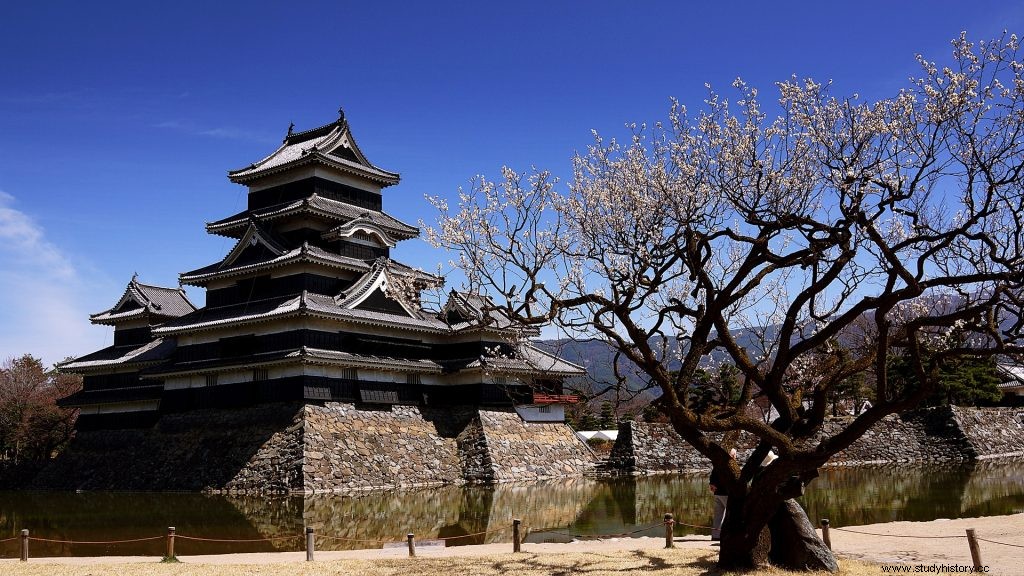Samurai, the legendary warriors of Japan, are considered brave and virtuous. They were trained to become elite fighters from an early age and learned how to use bows and arrows, spears and lances as well as daggers. From the 15th century, however, the most important weapon of the samurai was the sword. As a sign of his status, the sword was of central importance. So it was always within reach and was passed on for generations. The Shogun Tokugawa Ieyasu decreed the following:“The sword is the soul of the samurai. Whoever loses it is dishonored and subject to the severest punishment.”
The samurai in historical context
The fighters from the landed gentry have served the emperor since the 8th century and carried out his will throughout the country. However, over the centuries, the samurai continued to gain power, especially in the provinces. This remained so until a new form of government emerged in the 12th century:the shogunate with the shogun, who was to command the samurai from then on. A period of conflict and unrest follows.

Only the Shogun Oda Nobunaga brings peace to the country. He divides the population into four estates, with the samurai at the top. They alone are permitted to wield two swords. In the following 250 years of peace, however, their position in society declined because the authorities had them trained for war - which did not exist. They sometimes turn to other tasks, sometimes they become impoverished.
At the end of the 19th century, Emperor Meiji completely abolished the status of the samurai. From 1876 they were forbidden to wear the traditional costume in public. The other samurai rebel, but without success. In 1875/76 the Japanese army put down the last rebellion, albeit with great losses.

The Blades of the Samurai
Katanas
Originally, the samurai were mounted warriors, armed primarily with bows and arrows. If we think of samurai today, however, we immediately picture the typical blades in our mind's eye, especially katanas, wakizashis, tantos and odachis.
The katana is a Japanese long sword and the most well-known weapon of the samurai, as only they were allowed to carry it. There are numerous legends about it, for example that the steel for the blade is folded 32,768 times during manufacture. In fact, however, it is folded 15 times, resulting in 32,768 plies.
The katana developed from the tachi in the 15th century. Up until this time, samurai were mounted archers. The katana was shorter, lighter and less curved than the tachi, so it could be better used in single combat. In contrast to the curved sabre, the katana was wielded with two hands. It was worn on the belt so that it could be pulled quickly if necessary.
Wakizashi
The wakizashi is quite similar to the katana, but with a blade length of 30 to 60 cm it is much shorter and can therefore be wielded with one hand. It was worn by people of higher status.
It was used in various situations:when the main weapon was lost or broke during the fight, in fights in a small space or in seppuku, the ritual suicide. There is also a fighting technique in which the samurai wields the wakizashi in one hand and the katana in the other hand.
Together with the katana, the wakizashi forms the typical daishō - a pair of swords consisting of a short and a long sword. Both were worn in a special belt, the obi, with the cutting edge up.
Tantos
The tanto is a Japanese combat knife. The blade of the tanto is mostly straight, but it can also be slightly curved. As a rule, the blade is no longer than 30 cm. There are various special forms of tanto, including the Hamidashi, the very powerful Yoroi-doshi and the short Kaiken.
The tanto should not be confused with the modern blade shape of the western tanto. The Japanese blade shape is traditionally equipped with a rounded tip and is made without a burr.
Odachis
The Odachi, also called Nodachi, impresses with its unbelievable length. The longest known sword of this type was made in 1446 and has a total length of 3.77 m. Two people were therefore needed to pull the blade out of the scabbard.
